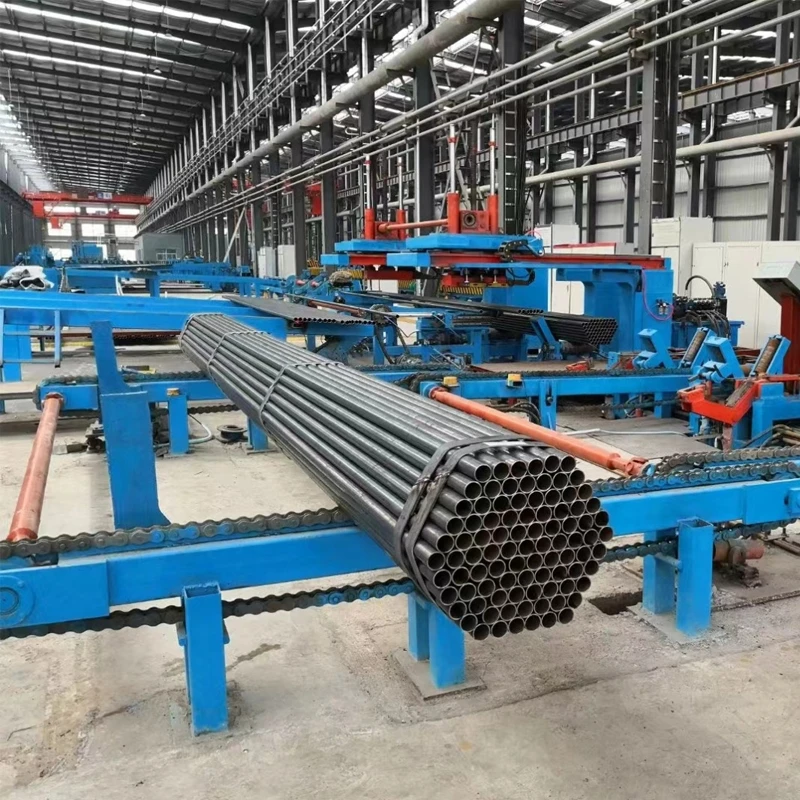manual pipe rolling machine
Understanding the Manual Pipe Rolling Machine
In the realm of metalworking, the manual pipe rolling machine stands out as a vital tool for shaping and forming metal pipes and tubes. This machine, often employed in various industries including construction, automotive, and manufacturing, allows operators to create precise curves and bends in metal, ensuring that the final product meets specific design requirements.
What is a Manual Pipe Rolling Machine?
A manual pipe rolling machine is designed to reshape metal pipes and tubes through mechanical means. Unlike its automatic counterparts, the manual version requires direct input from the operator, making it a cost-effective solution for smaller projects or workshops. The machine typically consists of three rolls arranged in a triangular configuration, where two rolls are stationary while the third roll moves up and down to create the desired curvature.
The design of these machines allows for the rolling of different diameters and thicknesses of pipes. Operators can manually adjust the position of the rolls to accommodate various pipe sizes, making the machine versatile and adaptable to various tasks.
Working Principle
The operation of a manual pipe rolling machine is relatively straightforward. The pipe is fed into the machine and positioned between the rolls. As the third roll is lowered onto the pipe, it begins to exert force, causing the pipe to bend around the rolls. Operators can control the tightness of the bend by adjusting the gap between the rolls and the amount of pressure applied. This manual control allows for greater precision in achieving complex shapes and angles.
One of the notable advantages of manual pipe rolling machines is their ability to create a wide range of radii and angles. This is particularly beneficial for fabricators who need to adhere to specific design specifications or create unique components for a project.
Benefits of Using a Manual Pipe Rolling Machine
manual pipe rolling machine

1. Cost Efficiency Manual machines are generally less expensive than automated systems, making them an attractive option for small businesses or workshops with limited budgets.
2. Simplicity The straightforward design and operation of manual pipe rolling machines make them easy to use, even for those with minimal training or experience in metalworking.
3. Versatility These machines can handle various materials, including stainless steel, aluminum, and carbon steel. This versatility allows manufacturers to work with different types of pipes without needing multiple machines.
4. Precision The manual aspect of these machines enables operators to have more control over the bending process, resulting in high precision and consistency in the finished products.
5. Durability Built with robust materials, manual pipe rolling machines are designed to endure the rigors of heavy-duty use, making them a long-lasting investment for any workshop.
Applications
Manual pipe rolling machines find application across numerous sectors. In construction, they are used to create curved support structures and decorative elements. In automotive manufacturing, they help in fabricating exhaust systems and chassis components. Other fields such as furniture design and art also take advantage of these machines to create bespoke pieces.
Conclusion
The manual pipe rolling machine is an indispensable asset in the metalworking industry. Its ability to manipulate metal pipes with precision and versatility makes it a valuable tool for manufacturers and fabricators alike. As industries continue to demand more customized and intricate designs, the role of manual pipe rolling machines will only grow, ensuring they remain relevant in the evolving landscape of metal fabrication. Whether you are a seasoned professional or a newcomer to metalworking, understanding the capabilities and uses of a manual pipe rolling machine is essential for enhancing your craft and meeting client demands effectively.
-
High Frequency Straight Seam Welded Pipe Production Line-BzZhou Xinghua Machinery Equipment Manufacturing Co., LTD.|line pipe steel&welded gas pipeNewsJul.30,2025
-
High Frequency Straight Seam Welded Pipe Production Line-BzZhou Xinghua Machinery Equipment Manufacturing Co., LTD.|High Precision&Automated SolutionsNewsJul.30,2025
-
High Frequency Straight Seam Welded Pipe Production Line - BzZhou Xinghua Machinery Equipment Manufacturing Co., Ltd.NewsJul.30,2025
-
High Frequency Straight Seam Welded Pipe Production Line-BzZhou Xinghua Machinery Equipment Manufacturing Co., LTD.|Precision Welding, High EfficiencyNewsJul.30,2025
-
High Frequency Straight Seam Welded Pipe Production Line|BzZhou Xinghua|Precision Welding&EfficiencyNewsJul.30,2025
-
High Frequency Straight Seam Welded Pipe Production Line - BzZhou Xinghua|Precision Engineering&EfficiencyNewsJul.30,2025


